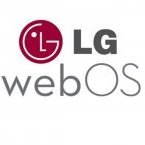webOS OSE adds support for Raspberry Pi 4, dual displays, and more!
-
-
Similar Topics
-
By News Reporter
Selected Finalists to Receive Funding to Develop and Launch
Their Gaming or Lifestyle App on LG Smart TVs
SEOUL, July 9, 2024 — LG Electronics (LG) announced a call for participants for its annual global webOS hackathon, with a focus this year on AI-based solutions and gaming services. Developers worldwide are invited to apply and submit their apps for a chance to win a significant monetary prize along with the opportunity to present onstage to LG executives in Seoul, South Korea, this September.
As a web-centric platform with an easy-to-use Smart TV software development kit, webOS enables developers to create third-party services and apps for millions of homes worldwide. The platform offers developers the tools to create apps and services that engage media, devices, security, networking, Smart TV functionalities and more. Through this hackathon, developers will have the opportunity to build and launch their app on LG Smart TVs, directly reaching consumers with their business.
Powering LG Smart TVs, including the award-winning LG OLED TV, for over a decade, webOS platform has been acclaimed as a friendly user interface, with easy navigation and customization to provide users with the premium entertainment experience expected from LG products. Now, with an always-growing ecosystem of global partners, the webOS platform is set to drive the next generation of service innovation.
In addition, LG is committed to expanding the webOS ecosystem by partnering with leaders in the gaming industry. This collaboration aims to offer customers a wide range of gaming services tailored to diverse preferences and interests, while enhancing the gaming capabilities of its exceptional OLED TVs. LG Smart TVs in global markets now feature an increasing array of cloud gaming services and family-friendly games.
To participate in the hackathon, applicants will need to submit their applications
link hidden, please login to view. Applications for the hackathon are now open and will close on July 26. Following the application process, participants will be invited to a webinar to learn more about the API and hackathon details. Finalists will be notified by mid-September. For more information about the hackathon, including detailed event schedules with terms and conditions, visit .
The hackathon will begin with a virtual webinar in early July. Participants will choose to create a game or lifestyle service app using either the Web or Flutter framework, with the opportunity to earn additional merit points for utilizing AI. The app, scenario and demo video must be submitted by August 26. Selected winning developers will then be invited to Seoul to present their ideas in front of top LG executives on September 27.
Cash prizes will be awarded to the top three winners of the hackathon, with a USD 100,000 Grand Prize for first place, USD 80,000 for second place and USD 50,000 for third place. The winners will also receive technical support leading up to the rollout of their app as well as on-device promotional opportunities after the launch. Winning apps must be ready for release on the LG Content Store by the end of June 2025.
“LG webOS Hackathon 2024 aims to attract creators worldwide who are building lifestyle solutions,” said Chris Jo, senior vice president of platform business at LG Home Entertainment Company. “LG is committed to engaging with the gaming community on a global scale, partnering with developers to nurture the next generation of talent using LG’s developer platform.”
# # #
-
By Schleimie
Hey,
My question is, can I install webos4.0 or higher on my lg 49uj701v, for example via a USB stick with an .apk ? I would like to download Paramount+.
Thanks a lot
-
By News Reporter
As the mobility industry shifts towards software-defined vehicles (SDVs), the importance of automotive displays continues to grow. Advanced display technology is already enhancing in-car infotainment systems and user experiences by presenting drivers with a wealth of vehicle and road-related information, while offering passengers an array of entertaining content.
The trend of incorporating larger and more numerous displays within vehicles, often referred to as ‘screenification,’ is elevating the convenience, safety and enjoyment of vehicle occupants, while also influencing vehicle cabin design. OLED panels, known for their superior image quality and unmatched flexibility (both literally and in terms of design), are increasingly being adopted in the premium auto segment.
Market research firm Omdia projects that by 2030, one out of every two information display units used in premium vehicles will be an OLED panel. Several global automakers are now equipping their high-end models with large, high-resolution displays to meet customers’ evolving expectations and preferences. With their stunning colors, clarity and contrast, OLED panels are raising the bar for automotive displays and are expected to drive the market’s continued expansion.
OLED technology makes it possible to create large, curved and flexible screens for use in digital cockpits. In response to the auto industry’s increasing interest in premium displays, the R&D laboratory at LG’s Vehicle component Solutions (VS) Company has recently developed an algorithm for its in-vehicle OLED displays that compensates for any visual distortion related to viewing angle. This advanced technology, first showcased at Display Week 2024, ensures that LG’s automotive OLED screens deliver consistent brightness and distortion-free colors from practically any angle. As a result, drivers can now see images and text more clearly across all parts of the display, enhancing safety by reducing the time needed to check on-screen information.
LG’s new technology overcomes the viewing-angle limitations typically associated with large, curved OLED displays. Currently, LG is the only automotive display supplier to have developed an algorithm that corrects these particular issues and is now in the process of commercializing this innovation.
Research into flexible OLED automotive displays has been a major focus for LG VS Company’s R&D laboratory over the past year. Kim Kyung-lack, vice president of Display Development at LG VS Company, noted that due to extensive and ongoing efforts, LG is able to offer a wide range of automotive displays leveraging next-generation technology to deliver outstanding performance. Since 2022, LG has been developing advanced in-vehicle displays and now boasts an impressive portfolio of solutions, including screens with rollable, flexible and foldable form factors. The company’s diverse offerings provide automakers with more choices when designing vehicle interiors and offer vehicle users a richer, more varied in-car experience.
Beyond automotive displays and components such as EV motors and smart lamps, LG VS Company offers cutting-edge in-vehicle software platforms and solutions. This software integrates seamlessly with the company’s display products to form a complete in-car experience solution, adding significant value for automakers seeking to enhance the functionality of their existing infotainment systems.
Through its innovative solutions for vehicles, LG is accelerating the arrival of the SDV era and playing a leading role in redefining the future of mobility.
To learn more about LG’s advanced automotive display products, visit
link hidden, please login to view. # # #
-
By Flavio_S
On LG OLEDs. You go on and disable SIMPLINK. Fine. But everytime you turn on your HDMI device it enables itself back again. This happens because they have disables two key features that were present in previous OSs, as you can see clearly here
link hidden, please login to view (they even put screencaps of the menus where you see the missing options in the 23) These functions are Auto Power Sync and Auto Device Detection.
Man updates are supposed to add functionalities not the other way around. It's very annoying to turn on your TV and have your AVR turn on without you wanting to.
Anyone found a solution for this problem?
-
-
By denisuu
Hi all,
I'm wondering how you can get into the service menu (In Start) on an old LG Smart TV (42LB630V) running WebOS 1.4. I have a Samsung Galaxy S6 (SM-G920F) with a IR blaster, I have tried sending '0x04FB 0xFB04' to I which should be IR code to enter the menu, but that doesn't work.
I have also tried entering it with the SSAP-Web, but I get:
error: 500 Application error {"errorCode":-101,"returnValue":false,"errorText":"\"com.webos.app.factorywin\" was not found OR Unsupported Application Type" The SAPP-Web app does works though, because the TV does respond to Get info
{ "returnValue": true, "product_name": "webOS", "model_name": "HE_DTV_WT1M_AFAAABAA", "sw_type": "FIRMWARE", "major_ver": "05", "minor_ver": "05.90", "country": "omitted", "device_id": "omitted", "auth_flag": "N", "ignore_disable": "N", "eco_info": "01", "config_key": "00", "language_code": "en-GB" } The reason I want to access the menu is because I've enabled DEBUG mode on my TV through the NVM method and I want to enter a root shell trough UART to enable SSH and root access.
Gaining root access through NVM:
link hidden, please login to view
-
-
-
Similar Tagged Content





Recommended Posts
Join the conversation
You can post now and register later. If you have an account, sign in now to post with your account.